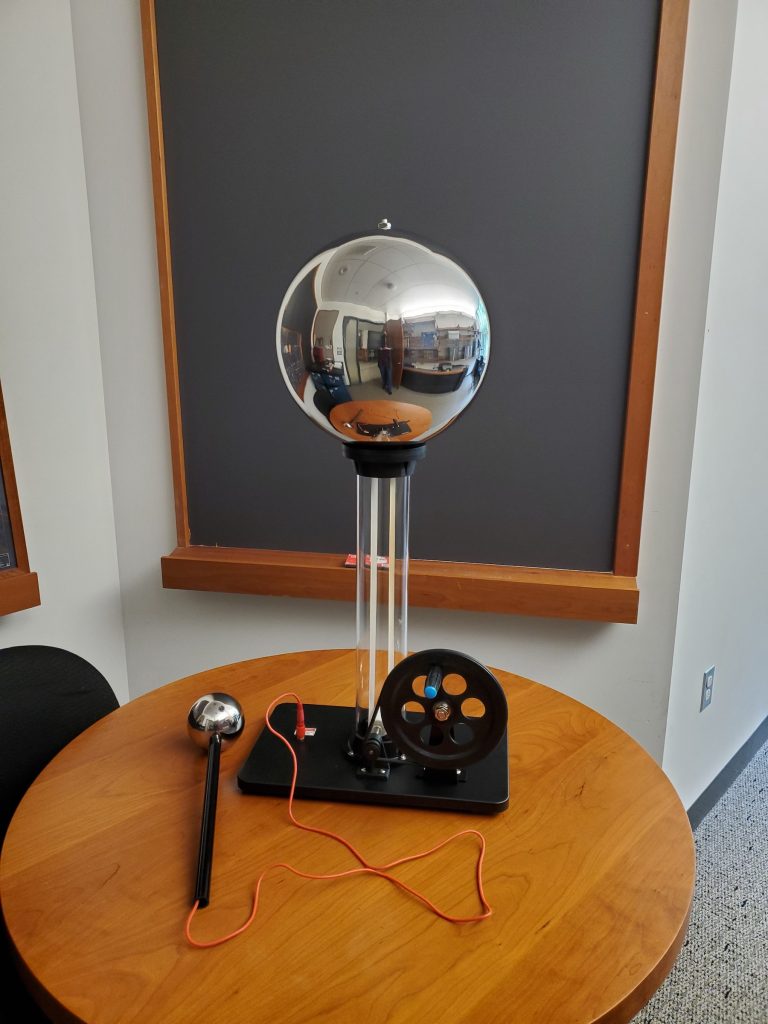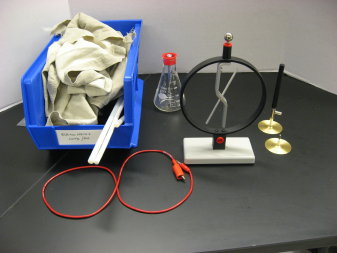
- Principle: Static electricity is cool.
- Located in L01, section A2
- Van de Graaf accessories are located beneath Van de Graaff
generator in plastic containers.
Some ideas for experiments beyond the typical shock-myself-and-my-students:
- Bend a paper clip into an L shape and tape it to the charged sphere to create
an ion gun; point the paper clip at the palm of your hand to feel the “ion
wind”. Point the paper clip at your shirt to charge your shirt up- after
30 seconds shirt should begin sticking to your chest.
- Place a cup of styrofoam peanuts, or a stack of styro or aluminum plates
on top of the sphere, turn on generator and watch stuff fly.
- Dim the room lights, touch one end of a fluorescent bulb to the charged
sphere and the other end of the bulb to the small discharging sphere. Bulb
will flicker.
- Using a squirt gun shoot a stream of water past the charged sphere; water
should ionize and stream will disperse.
Additional Van de Graaff demo ideas




















